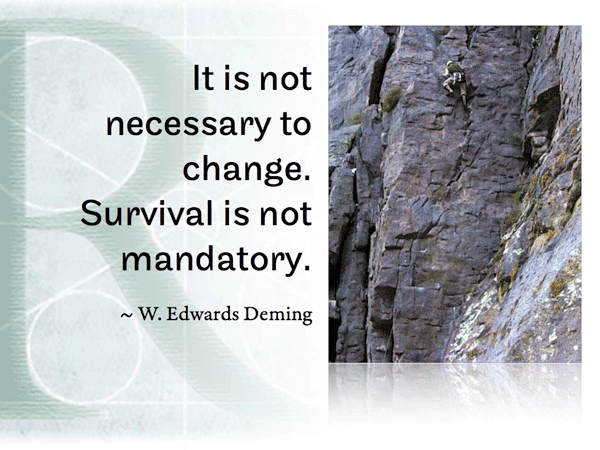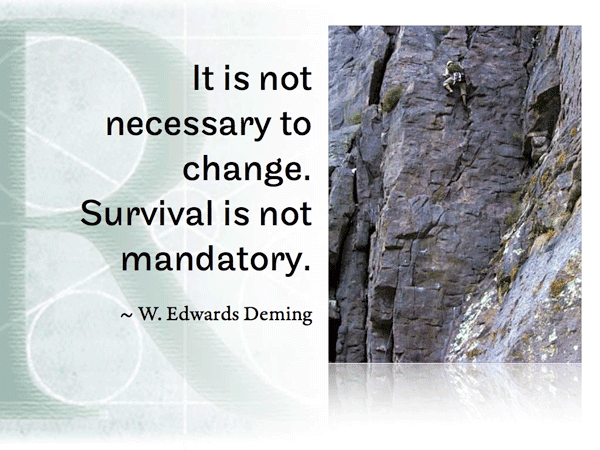Consumer-Based Reliability
Guest Post by Daniel Conrad, Director Design Quality, Reliability and Testing, Hussmann Corporation
Quality has always been important to the consumer, but with the current economic conditions, it is perhaps more important than ever. “Value” is today’s consumer buzzword, and that means designing products that not only meet a certain price point, but offer what consumers perceive as quality. Put simply: They want to invest in a reliable product.
But what exactly does that mean? Reliability is a concept, an expectation, a philosophy, and a metric. It means many things to many people. This is our challenge. Webster defines reliability as
the quality or state of being reliable; the extent to which an experiment, test, or measuring procedure yields the same results on successive trials.
I view reliability as engineering metric that defines the probability of a function’s success at a specific time under defined conditions. This is needed by engineers to ensure consistent measurements. I view “Design for Reliability” as the process to ensure the design is meeting the customer’s expectation or consumer-based reliability metrics. As quality professionals, I feel we need to help our organizations harness the power of these reliability concepts for the betterment of our customers, our organization, our shareholders, and other stakeholders.
Why do we care about reliability? The short answer for the producer and the consumer is money. For producers, statistics indicate that companies can spend up to 25% of their development budget solving reliability issues, according to www.conekt.net. Thus, a significant resource potential is available if we do it right the first time. Wouldn’t we rather put that money toward innovation or other business needs? For consumers, it is a matter of value. Do we get the benefits for which we paid? This is the heart of consumer-based reliability.
Consumer-based reliability is simply the delivery of the reliability expectation of the customer as part of the value equation. For consumer products, this can be a challenge for engineers to quantify due to the language. The customer’s understanding of durability, reliability, and quality make these terms nearly interchangeable.
From consumer surveys, the definition of durability was “reliable for a long time,” while the definition of reliability was “works for a long time.” However, poor reliability or durability has a direct relationship to a poor perception of brand quality. Additionally , there is a perception that new products are less reliable and less durable than previous generations. This is an artifact of consumer marketing and improved design methods. Clearly, part of the perceived decrease in life expectancy is driven by the harmonization of the appliance and electronics industries. The typical design life of a consumer appliance is 10 years today, but the life expectancy is dependent upon consumer use and care. This is why you hear the stories about an appliance working after 40 plus years.
Today’s appliances have been designed to eliminate the failure modes and mechanisms of past designs. For example, porcelain tubs that used to have pinhole leaks due to rusting are now plastic and no longer leak. As a result, this updated design has different failure modes and less heft. However, heft is what the consumer translates into durability and reliability. This shift in technology becomes a challenge and an opportunity for the designer. It allows the designer to shift the story to the relevant customer issues and how they are delivering consumer-based reliability to meet the customer’s needs.
In consumer durables, customer reliability expectations are a top consideration in a product’s perceived value, but customers do not expect perfection. They will tolerate a failure, but how that failure is handled matters: When the failure occurs, how much did it cost the consumer, and did the producer stand behind the product restoration? In addition, most consumers replace their appliances simply because the old one has died. It is important that this happens in a timeframe the consumer expects and accepts.
This brings us to the ultimate goal — customer satisfaction, which hopefully breeds brand loyalty . And in today’s market, everyone wants loyal customers. Today’s consumers are looking for branded products that will deliver value over a period of time — the true basis of reliability. And they demand it because they get it. The reliability of many consumer products has increased over the last decade — cars now routinely go 10 years and 100K miles without any major repairs and electronics like cell phones, TVs, and computers perform quite dependably and are usually replaced before their end of life. These every day experiences allow the consumer to demand the same dependability in all products.
Every satisfied consumer counts — as does every unsatisfied consumer. A satisfied consumer tells about four other people about his or her experience, while an unsatisfied consumer tells about 12 other people. This means the negative news “travels” three times faster than positive news. And thanks to the proliferation of web sites like You Tube, Garden Web, and Consumer Reports — not to mention product reviews from online retailers like Amazon — customers can quickly obtain reliability information and customer opinions on a product or service. A single consumer with a perceived reliability issue can communicate to millions of our potential customers with or without cause at very l ittle cost today. Blogs, consumer web sites, Twitter, and Facebook are global communication portals; therefore, “good enough” is not good enough anymore. We have to strive to meet the expectations of the consumer in a global interconnect “market space,” and consumer-based reliability is one aspect of meeting these expectations.
To do this the designer must become a customer advocate and translate the wants and needs of the customer into relevant reliability and durability specifications so that engineering can build the designs to meet these needs. Traditional reliability aims to be better than your competitors. Consumer-based reliability aims to meeting the customer expectations, which, if done right, will automatically beat out the competition.
About the Author
Daniel C. Conrad is the Global Engineering Director Design Quality, Reliability and Testing at Hussmann Corporation in St. Louis, MO, US. Prior to this he was the Global Design for Reliability Leader at Whirlpool Corporation in Evansville, IN, U.S.
He has a B.S. from the University of Kentucky in Mechanical Engineering and a MS and Ph.D. from Purdue University in Engineering Mechanics. He is a certified reliability engineer, is a Six Sigma black belt, and holds several U.S. patents.



 Phillip K. Dick (Brain Pickings,
Phillip K. Dick (Brain Pickings, 